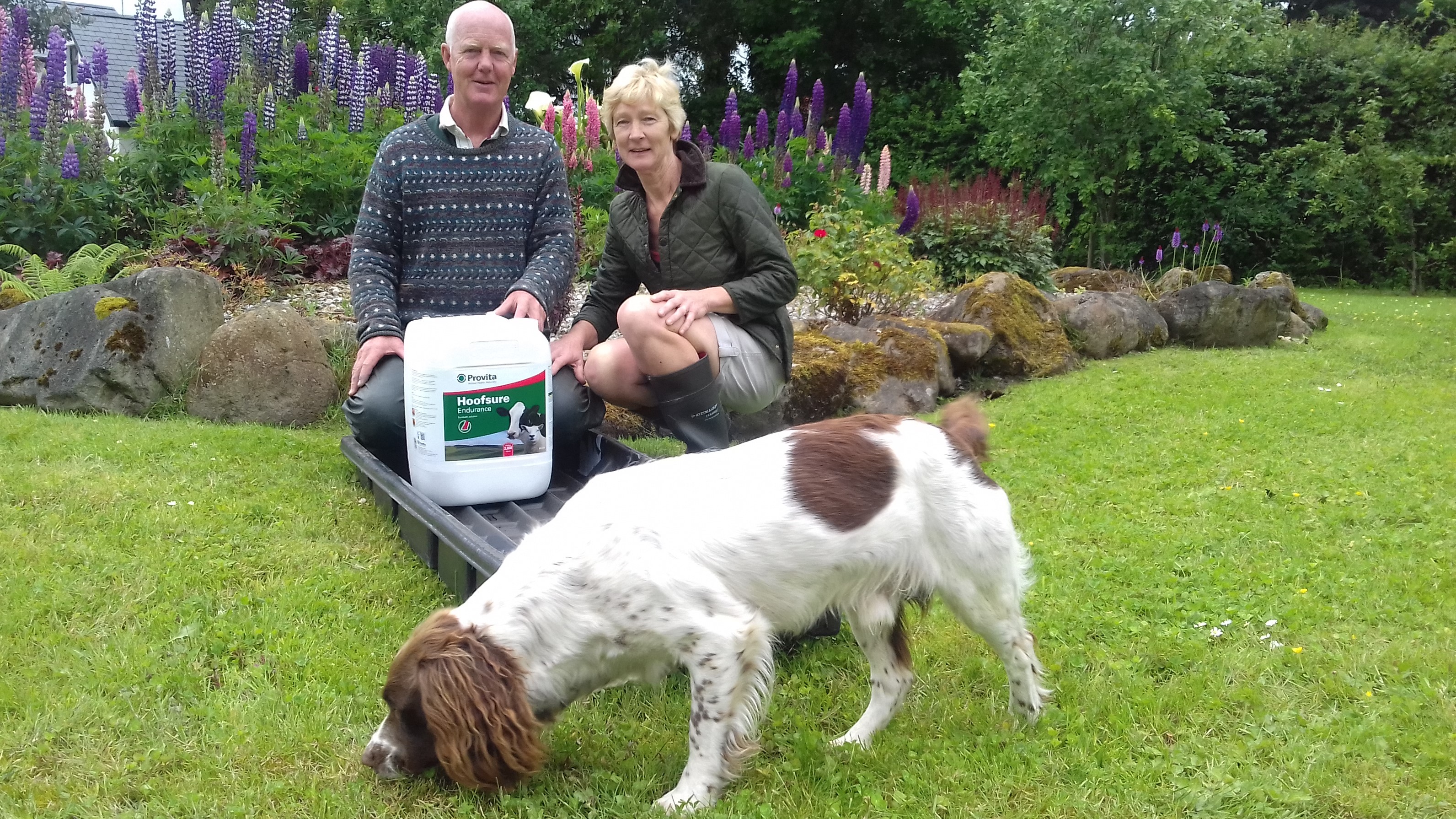Perry and Barbara Semple run a commercial flock of 500 ewes near Limavady. The ewes are Suffolk and Texel cross mule sheep put back to Texel and Belclare rams.
“We start to get lambs away from 11 weeks of age at 20kg deadweight with no meal. To do this they need to be thriving well the whole way through and cannot suffer any setbacks.
To achieve this the Semples use a variety of management techniques including rotational grazing and topping to ensure fresh leafy grass is available all the time, a worming and fluke program based on SCOPS principles and a preventative footbathing program.
“I used a ½ bag of Urea in early March. This gave me a good early bite of grass when the ewes and lambs need it most,” continued Perry.
The best response from Urea is when conditions are cold and wet, from 0 to 10 degrees and 5 to 20 ml of rain is predicted within 3 days of sowing.
“We also do soil testing and would then vary the compound fertilizer used late spring and in late summer we apply a ¾ bag per acre. During the summer grass grows rapidly and we don’t need any fertilizer then, indeed topping is needed to ensure grass stays leafy and at the ideal height for sheep, to prevent long grass irritating the skin on lamb’s feet which can lead to scald. Then a little is applied late summer to ensure a good supply of grass for flushing ewes pre-tupping. We try to keep meal use to a minimum. We only feed twins or multiples before lambing and then for a few weeks after lambing. The vast majority of lambs are finished without meal. For worming and fluke we do faecal sampling to decide if, and when the sheep need wormed and fluked as some years you don’t need much dosing and others you need regular dosing. We also rotate the actives we use to help reduce the chance of resistance,” commented Perry
“For controlling lameness we use a preventative approach. All the ewes are done with Foot Vax and we footbath them with Provita Hoofsure Endurance. Any time we are handling the sheep we run them through the footbath twice. Footbaths are set up at the end of the race on two different parts of the farm. As soon as the sheep come in we run them through the footbath, then we do whatever task such as worming or weighing afterwards, this way they get to stand in the handling pens for some time. Then then get a second run through the footbath after we dose them or weigh them. I’d say we footbath every 3 to 5 weeks and lambs could also be done 8 to 9 times. We put 2” sponge in the footbaths as this means there is less splashing and sheep go through it better for the first time. When they get used to it they go through no problem. It is filled to 3” and the dilution rate is 1.5%, we use about 2 x 20 litres of Hoofsure Endurance per year in this system. Initially I thought Hoofsure Endurance was expensive compared to Formalin or Bluestone but when you work it out it’s not any dearer plus it’s much safer for me to use. When you cost this out over all our sheep it’s about 20p per head per year which is nothing compared to the cost of lameness. Sheep that get lame don’t have as much milk; they lose or don’t put on weight and are more likely to be infertile, so preventing lameness more than pays for itself. To control lameness prevention is more successful and profitable than curing,” concluded Perry.
